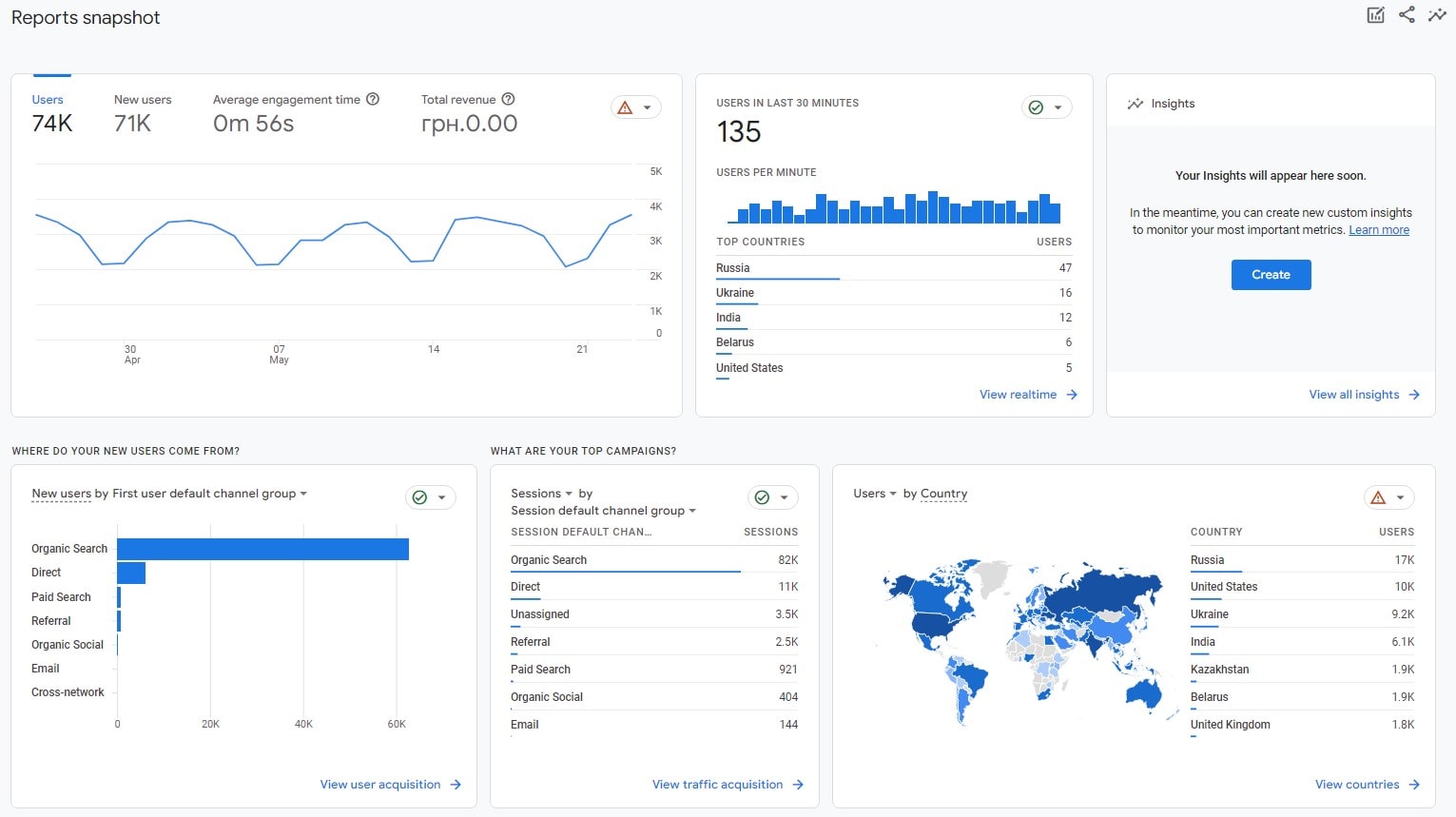
Published: Nov 30, 2024
How Keyword Research Turbocharges Your SEO Content Game
How Keyword Research Turbocharges Your SEO Content Game
I’ve got a dirty little secret… and it’s all about keywords, baby! As a content marketing strategist, I’ve seen firsthand how the right words can make or break your SEO game. So buckle up, because I’m about to spill the beans on how keyword research can turn your content from drab to fab!
TLDR:What's the big deal about keyword research for SEO content, anyway?
1️⃣ How does keyword research improve SEO content quality?
Keyword research helps you understand what your audience is searching for, allowing you to create content that directly addresses their needs and interests. This relevance boosts your content’s quality and makes it more likely to rank higher in search results.
2️⃣ Can keyword research really impact my website’s traffic?
Absolutely! By targeting the right keywords, you can attract more qualified traffic to your site. This isn’t just about quantity – it’s about getting the right eyes on your content, which can lead to higher engagement and conversion rates.
3️⃣ How often should I update my keyword strategy?
Keyword trends can change quickly, so it’s best to review your strategy at least quarterly. However, for fast-moving industries or during major market shifts, you might want to check in monthly to stay ahead of the curve.
Table of Contents
- The Keyword Research Revolution
- Common Keyword Research Pitfalls (and How to Avoid Them)
- From Keywords to Content: Bridging the Gap
- The Future of Keyword Research: Trends to Watch
- Digging for Gold: How to Do Keyword Research
- Measuring Success: Keyword Performance Metrics
The Keyword Research Revolution
Ever feel like you’re shouting into the void with your content? I sure did when I first started out. Then I stumbled upon the game-changer: keyword research. It’s like having a secret decoder ring for what your audience actually wants to read.
Search Engine Optimization (SEO) Basics
Let’s break it down. SEO is all about making your content visible to search engines. But here’s the kicker - it’s not just about pleasing robots. It’s about connecting with real people who are typing queries into search bars.
The Nitty-Gritty of Keywords
- Short-tail keywords
 These are the broad, general terms. Think “shoes” or “pizza.”
These are the broad, general terms. Think “shoes” or “pizza.” - Long-tail keywords More specific phrases like “vegan running shoes” or “best deep-dish pizza in Chicago.”
Why Keyword Research Rocks
Target Audience Insight
- It’s like mind-reading. You get to know what your potential customers are actually searching for.
Content Strategy Guidance
- No more throwing spaghetti at the wall. Keyword research gives you a roadmap for content that’ll actually get read.
-
- Peek over your competitors’ shoulders. What keywords are they ranking for? Can you do it better?
Tools of the Trade
I remember the first time I used a keyword research tool. It was like stepping into Willy Wonka’s chocolate factory, but for words. Here are some game-changers:
- Google Keyword Planner
 The OG of keyword tools. It’s free and straight from the horse’s mouth (Google).
The OG of keyword tools. It’s free and straight from the horse’s mouth (Google). - Ahrefs My personal favorite. It’s like the Swiss Army knife of SEO tools.
- SEMrush Another powerhouse. Great for spying on your competitors.
The Impact on Content Quality
Here’s where it gets juicy. Good keyword research doesn’t just help you rank - it makes your content better. How? By forcing you to focus on what your audience actually cares about.
Case Study: The Blog Post That Blew Up
I once wrote a post about “DIY home office setups.” It was crickets. Then I did some keyword research and rewrote it as “Budget-friendly home office ideas for small spaces.” Boom! Traffic exploded.
Evolving with the Times
Keyword research isn’t static. It’s a living, breathing thing that changes with trends, seasons, and even world events.
COVID-19 Impact
During the pandemic, searches for “home workout equipment” skyrocketed. Businesses that caught on early were able to pivot their content strategy and capture that traffic.
The Human Touch
Here’s the thing - keyword research is a tool, not a crutch. It’s meant to guide your content, not dictate it. The magic happens when you combine data-driven insights with your unique voice and expertise.
Remember, at the end of the day, you’re writing for people, not algorithms. Use keywords to get them to your content, but keep them there with your personality and knowledge.
Keyword research revolutionized my approach to content. It turned guesswork into strategy, and “meh” content into stuff people actually want to read. So dive in, get your hands dirty with some keyword tools, and watch your content game level up!
Common Keyword Research Pitfalls (and How to Avoid Them)
Let’s face it, keyword research isn’t always a walk in the park. I’ve stumbled into plenty of pitfalls myself, and I bet you have too. But don’t worry - I’m here to share the hard-won lessons so you can dodge these common traps.
Obsessing Over High-Volume Keywords
We’ve all been there. You see a keyword with massive search volume and your eyes light up like a kid in a candy store. But hold your horses! High volume often means high competition.
The Volume vs. Competition Balance
- High Volume, High Competition: Think “best smartphones”. Everyone’s gunning for these.
- Low Volume, Low Competition: Niche terms like “eco-friendly smartphone cases for hikers”. Less traffic, but easier to rank for.
Pro Tip: Look for that sweet spot of decent volume and manageable competition. It’s like finding a hidden gem in a thrift store - takes some digging, but totally worth it.
Ignoring Search Intent
You might have found the perfect keyword, but if your content doesn’t match what the searcher actually wants, you’re in for a world of disappointment.
Types of Search Intent
- Informational “How to make sourdough bread”
- Navigational “Facebook login”
- Transactional “Buy Nike Air Max”
- Commercial Investigation “Best running shoes for flat feet”
Real-World Example: I once targeted “best coffee makers” with a product page. Big mistake. Turns out, people searching for this want comparison articles, not a sales pitch. Lesson learned!
Neglecting Long-Tail Keywords
Don’t be that person who only swings for the fences with broad keywords. Long-tail keywords are where the magic happens.
Why Long-Tail Keywords Rock
- Less competition
- Higher conversion rates
- More specific to user needs
Case Study: A client’s pet supply store saw a 50% traffic increase after we shifted focus to long-tail keywords like “hypoallergenic dog food for Labradors” instead of just “dog food”.
Keyword Stuffing (It’s So 2005)
If you’re cramming keywords into your content like you’re playing Tetris, stop right now. It’s not just annoying - it can get you penalized by Google.
How to Use Keywords Naturally
- Write for humans first, search engines second
- Use synonyms and related terms
- Focus on topics, not just individual keywords
Pro Tip: Read your content out loud. If it sounds weird or robotic, you’ve probably overdone it with the keywords.
Forgetting to Re-evaluate Your Strategy
The digital world moves fast. The keywords that worked last year might be old news now.
When to Update Your Keyword Strategy
- Quarterly for most businesses
- Monthly for fast-moving industries
- After major industry changes or world events
Example: A travel blog I worked with had to completely overhaul their keyword strategy when COVID-19 hit. “Best international destinations” quickly became “Staycation ideas”.
Overlooking Competitor Analysis
Don’t reinvent the wheel. Your competitors can be a goldmine of keyword ideas.
How to Spy on Your Competitors (Legally!)
- Use tools like SEMrush or Ahrefs to see what keywords they’re ranking for
- Analyze their content structure and topics
- Look for gaps in their strategy that you can fill
Caution: Don’t just copy your competitors. Use their strategy as inspiration to create something better.
Ignoring Local SEO
If you have a physical location or serve a specific area, you’re missing out big time by not focusing on local keywords.
Local Keyword Strategies
- Use location-specific terms (e.g., “best pizza in Brooklyn”)
- Target landmarks or neighborhoods (e.g., “coffee shop near Central Park”)
- Don’t forget “near me” searches
Success Story: A small bookstore in Austin, Texas, saw foot traffic double after optimizing for local keywords like “indie bookstore near UT Austin”.
Forgetting About User Experience
At the end of the day, all the keyword optimization in the world won’t help if your site is a pain to use.
UX Factors That Impact SEO
- Page load speed
- Mobile responsiveness
- Easy navigation
- High-quality, relevant content
Remember: Google’s PageRank algorithm considers user experience signals. A fast, user-friendly site with great content will naturally rank better.
Avoiding these pitfalls isn’t just about improving your rankings - it’s about creating content that genuinely helps your audience. And isn’t that what it’s all about? Keep these tips in mind, and you’ll be well on your way to keyword research success. Now go forth and conquer those SERPs!
From Keywords to Content: Bridging the Gap
Let’s get real - finding killer keywords is only half the battle. The real magic happens when you seamlessly weave those keywords into content that’s not just SEO-friendly, but actually worth reading. Trust me, I’ve had my fair share of awkward keyword stuffing moments. But over time, I’ve cracked the code on how to make keywords and content play nice together.
The Art of Natural Keyword Integration
Remember, we’re writing for humans, not robots. The goal is to make your content flow so smoothly that readers don’t even notice the keywords. Here’s how:
-
- Use related terms and synonyms
- Focus on topics, not just individual keywords
- Example: If your main keyword is “best running shoes”, include terms like “athletic footwear”, “jogging sneakers”, and “marathon trainers”
Context is King
- Surround your keywords with relevant, valuable information
- Don’t just drop keywords in random places
Vary Your Keyword Usage
- Use different forms of your keywords (singular, plural, past tense, etc.)
- Mix up your phrasing to keep things natural
Keyword Placement Strategies
Where you put your keywords matters just as much as how you use them. Here are some prime spots:
- Title Tags: Front-load your main keyword if possible
- Meta Descriptions Include your primary keyword and a call-to-action
- H1, H2, H3 Tags Sprinkle keywords in your headings, but keep it natural
- First 100 Words: Try to include your main keyword early in your content
- Image Alt Text: Describe your images using keywords where appropriate
The Keyword Density Myth
You might have heard that you need to use your keyword X number of times. Forget about it! There’s no magic number. Instead, focus on:
- Readability If it sounds weird when you read it aloud, you’ve probably overdone it
- User Intent: Make sure your content actually answers the question behind the keyword
- Quality Over Quantity: One perfectly placed keyword beats ten awkwardly shoved ones
Long-Form Content: A Keyword Playground
Long-form content (1500+ words) gives you more opportunities to naturally include keywords and related terms. But remember:
- Break up your content with subheadings (H2s, H3s) for readability
- Use bullet points and numbered lists to make information digestible
- Include relevant images, infographics, or videos to keep readers engaged
Case Study: The Blog Post Makeover
I once worked on a blog post about “affordable home gym equipment”. The first draft was… well, let’s just say it was keyword-heavy and reader-light. Here’s how we fixed it:
Before (Bad Example) “Looking for affordable home gym equipment? Our affordable home gym equipment guide has the best affordable home gym equipment for your affordable home gym needs.”
After (Good Example) “Building a home gym doesn’t have to break the bank. From budget-friendly dumbbells to versatile resistance bands, we’ve got the scoop on creating your perfect workout space without emptying your wallet.”
See the difference? The second version flows naturally while still incorporating the main idea.
Tools for Smarter Keyword Integration
- Clearscope
 Helps you optimize content for target keywords
Helps you optimize content for target keywords - Hemingway Editor
 Checks readability and helps simplify your writing
Checks readability and helps simplify your writing - Google’s Natural Language API
 Analyzes entities and sentiment in your content
Analyzes entities and sentiment in your content
The Power of User-Generated Content
Don’t forget about the goldmine of natural keyword usage: your customers! User-generated content like reviews, comments, and forum posts can be a great source of inspiration for how real people talk about your products or services.
Evolving with Voice Search
As voice search becomes more prevalent, consider how people speak their queries:
- Focus on natural language and question-based keywords
- Use conversational phrases in your content
- Think about local intent (“near me” searches)
Remember, the goal is to create content that serves your readers first and search engines second. When you nail that balance, you’ll see your rankings climb and your engagement soar. It’s not about tricking the algorithm - it’s about genuinely being the best answer to your audience’s questions.
So, next time you’re staring at a list of keywords, don’t panic. Think about how you’d naturally work those topics into a conversation with a friend. That’s your starting point for creating content that’s both SEO-friendly and actually enjoyable to read. Now go forth and create some keyword magic!
The Future of Keyword Research: Trends to Watch
Keyword research isn’t static - it’s evolving faster than ever. Let’s dive into some game-changing trends that are reshaping how we approach SEO and content strategy.
Voice Search Optimization
Voice search is blowing up, thanks to smart speakers and virtual assistants. It’s changing the keyword game in a big way:
- Longer, more conversational queries
- Question-based searches (who, what, where, when, why, how)
- Local intent (“near me” searches)
Pro Tip: Optimize for voice by creating FAQ-style content and focusing on natural language patterns.
Semantic Search and Topic Clusters
Google’s getting smarter about understanding context and user intent. This means:
- Topic authority matters more than individual keywords
- Related terms and synonyms are crucial
- Comprehensive content wins over keyword-stuffed pages
Example: Instead of just targeting “best running shoes,” create a comprehensive guide covering types of running, shoe features, top brands, and injury prevention.
Artificial Intelligence in Keyword Research
AI tools are revolutionizing how we find and analyze keywords:
- Predictive analysis of trending topics
- Automated content gap analysis
- Intent matching at scale
Tool Spotlight:MarketMuse uses AI to analyze your content against top-ranking pages, suggesting topics to cover for comprehensive content.
Zero-Click Searches and Featured Snippets
With more searches being answered right on the SERP, optimization strategies are shifting:
- Target featured snippets with concise, structured content
- Optimize for ”People Also Ask” boxes
- Focus on branding and click-through rate optimization
Tip: Use tools like SEMrush to identify snippet opportunities in your niche.
Visual Search Optimization
As Google Lens and similar technologies advance, visual search is becoming more important:
- Optimize image alt text and file names
- Create descriptive captions
- Use schema markup for images
Case Study: A home decor blog saw a 30% increase in image search traffic after implementing detailed alt text and captions.
User Experience Signals
Google’s algorithm is placing more weight on user experience metrics:
(loading speed, interactivity, visual stability)
Mobile-friendliness
Safe browsing
HTTPS security
Action Item: Use Google’s PageSpeed Insights to check your site’s performance and get improvement suggestions.
Hyper-Local and Micro-Moment Targeting
As mobile usage grows, so does the importance of targeting specific moments and locations:
- Optimize for “near me” and “open now” searches
- Create content for micro-moments (I want to know, go, do, buy)
- Use local schema markup
Example: A coffee shop in Seattle created content around “best places to work remotely in Capitol Hill,” targeting the micro-moment of people looking for a workspace.
Entity SEO
Search engines are moving towards understanding entities (people, places, things) and their relationships:
- Use structured data to define entities clearly
- Build topical authority around key entities in your niche
- Create content that explains relationships between entities
Tool Tip: Use Google’s Natural Language API to analyze how well your content defines and relates entities.
E-A-T
- (Expertise, Authoritativeness, Trustworthiness)
For YMYL (Your Money or Your Life) topics, Google’s focusing more on E-A-T signals:
- Highlight author expertise and credentials
- Build authoritative backlinks
- Provide clear sources and references
Strategy: Create author bio pages and link to them from your content to establish expertise.
Predictive Search and Query Refinement
Search engines are getting better at predicting user needs:
- Optimize for related searches and query refinements
- Create content that answers follow-up questions
- Use tools like AnswerThePublic to find question clusters
Real-World Application: A fitness blog created a series of interconnected articles based on common query refinements for “how to lose weight,” covering diet, exercise, and lifestyle changes.
The future of keyword research is about understanding context, user intent, and the broader topic ecosystem. It’s not just about finding keywords anymore - it’s about creating comprehensive, user-focused content that truly answers searcher needs. Keep these trends in mind, and you’ll be well-positioned to dominate the SERPs of tomorrow!
Digging for Gold: How to Do Keyword Research
Keyword research is like panning for gold in the digital river of information. You’re sifting through mountains of data to find those precious nuggets that’ll make your content shine. I’ve spent countless hours knee-deep in keyword tools, and I’m here to share the tricks of the trade.
Brainstorming
The First Step
Start with your brain. Jot down every topic, question, and phrase related to your niche. Don’t hold back - even the wildest ideas can lead to keyword gold.
Pro Tip: Use a mind mapping tool like MindMeister to visualize your ideas and uncover connections you might have missed.
Seed Keywords: Planting the Roots
Seed keywords are your starting point. They’re broad terms that define your main topics. For example, if you’re in the fitness industry, seed keywords might include:
- Workout routines
- Nutrition plans
- Fitness equipment
Google Autocomplete
The Lazy Genius Hack
Type your seed keywords into Google and see what it suggests. It’s like having a direct line to what people are actually searching for.
Example: Type “workout routines for” and you might see:
- workout routines for beginners
- workout routines for women
- workout routines for weight loss
Google Keyword Planner
The OG Tool
It’s free, it’s straight from Google, and it’s packed with data. Here’s how to use it:
- Sign in to your Google Ads account (you don’t need an active campaign)
- Navigate to Tools > Keyword Planner
- Enter your seed keywords
- Analyze search volume and competition
Tip: Don’t just look at high-volume keywords. Sometimes the lower-volume, more specific terms can be your ticket to ranking success.
Ahrefs
The Swiss Army Knife of SEO
Ahrefs is my go-to for in-depth keyword research. It’s not free, but it’s worth every penny. Here’s what I love about it:
- Keyword Explorer: Enter a seed keyword and get thousands of ideas
- Questions: Find question-based keywords perfect for FAQ content
- Keyword Difficulty: Gauge how hard it’ll be to rank for a term
Real-World Example: I once used Ahrefs to find the keyword “best protein powder for women over 50.” It had decent search volume and low competition. The resulting article became one of my client’s top-performing pages.
SEMrush
Your Competitive Edge
SEMrush shines when it comes to competitor analysis. Here’s how to use it:
- Enter a competitor’s URL
- Check out their top-ranking keywords
- Look for gaps in their strategy that you can fill
Pro Move: Use SEMrush’s Topic Research tool to find related subtopics and questions around your main keywords.
Long-Tail Keywords: The Hidden Gems
Don’t ignore those longer, more specific phrases. They might have lower search volume, but they often have:
- Less competition
- Higher conversion rates
- More specific user intent
Example: “Best running shoes” is tough to rank for. But “best cushioned running shoes for flat feet” might be your golden ticket.
Google Trends
Riding the Wave
Google Trends shows you how search interest in keywords changes over time. It’s perfect for:
- Spotting seasonal trends
- Identifying rising topics in your niche
- Comparing interest in different keywords
Case Study: A gardening blog I worked with used Google Trends to time their content. They published articles about “spring planting tips” just as search interest started to rise in early March.
AnswerThePublic
The Question Master
This tool is a goldmine for question-based keywords. It generates visualizations of questions people are asking about your topic.
Tip: Use these questions to structure your content. Each question can be a subheading in your article.
Reddit and Quora
The Voice of the People
Don’t underestimate the power of forums and Q&A sites. They’re full of real people asking real questions.
- Search for your topic on Reddit or Quora
- Look for frequently asked questions or common pain points
- Use these insights to inform your keyword strategy
Example: A client in the pet care industry found the keyword “how to stop a dog from chewing furniture” from a popular Reddit thread. The resulting article became their most shared piece of content.
Analyzing Search Intent
Remember, it’s not just about finding keywords - it’s about understanding why people are searching for them. Google’s Search Quality Rater Guidelines break search intent into four categories:
- Informational: Seeking information (How to, What is)
- Navigational: Looking for a specific website or page
- Commercial: Researching products or services
- Transactional: Ready to make a purchase
Make sure your content matches the intent behind the keyword.
Putting It All Together: Your Keyword Strategy
- Start with brainstorming and seed keywords
- Use tools to expand your list and gather data
- Analyze search volume, difficulty, and intent
- Prioritize keywords based on your goals and resources
- Create a content calendar around your chosen keywords
Remember, keyword research isn’t a one-and-done deal. It’s an ongoing process. Keep refining, keep exploring, and keep creating content that truly answers your audience’s questions. Happy digging!
Measuring Success: Keyword Performance Metrics
Alright, let’s talk numbers! Measuring the success of your keyword strategy isn’t just about patting yourself on the back - it’s about understanding what’s working, what’s not, and how to keep improving. I’ve spent countless hours staring at analytics dashboards, and I’m here to break down the metrics that really matter.
Google Search Console
Your SEO Command Center
This free tool from Google is a goldmine of keyword performance data. Here’s what to look for:
Click-Through Rate (CTR)
- Measures how often people click on your search result
- Low CTR? Time to spice up those meta descriptions!
Average Position
- Shows where your page typically ranks for a keyword
- Aim for the top 10 - that’s page one, baby!
Impressions
- The number of times your page appeared in search results
- Great for gauging potential traffic
Pro Tip: Set up custom date comparisons to track progress over time. I once saw a client’s average position jump from 22 to 7 for a key term in just two months of focused optimization!
Google Analytics
Digging Deeper
While Search Console shows you search performance, Analytics tells you what happens after the click:
Organic Traffic
- The holy grail of SEO metrics
- Filter by landing page to see which keywords are driving visits
Bounce Rate
- High bounce rate? Your content might not be matching search intent
Time on Page
- Longer time usually means more engaged readers
- But context matters - a quick “what’s the weather” page might naturally have low time on page
Conversions
- Set up goals to track sign-ups, purchases, or other key actions
- Use the Assisted Conversions report to see how organic search contributes to your bottom line
Real-World Example: A SaaS client saw their demo sign-ups double after we optimized their landing pages based on Analytics insights.
Ahrefs
Competitive Intelligence
Ahrefs isn’t just for research - it’s great for tracking progress too:
Keyword Ranking
- Track positions for hundreds of keywords at once
- Set up alerts for significant ranking changes
Organic Keywords
- See all the keywords you’re ranking for, not just the ones you’re targeting
- Great for discovering unexpected wins
Traffic Value
- Estimates the value of your organic traffic if you had to pay for those clicks
- Useful for showing SEO ROI to stakeholders
Tip: Use Ahrefs’ Content Gap analysis to find keywords your competitors rank for but you don’t. It’s like a roadmap for your next content push.
SEMrush
The All-in-One Dashboard
SEMrush offers a comprehensive view of your keyword performance:
Position Tracking
- Set up projects to monitor your most important keywords
- Get beautiful visualizations of your ranking progress
Organic Research
- See which pages are driving the most organic traffic
- Identify opportunities for internal linking
Site Audit
- Technical SEO issues can tank your keyword performance
- Regular audits help you stay on top of potential problems
Case Study: A local law firm used SEMrush’s local SEO features to track performance in different cities. They discovered they were underperforming in a nearby town and adjusted their strategy, leading to a 40% increase in leads from that area.
Moz
Keyword Difficulty Insights
Moz’s tools offer unique perspectives on keyword difficulty:
Keyword Difficulty Score
- Estimates how hard it’ll be to rank for a keyword
- Helps you prioritize your efforts
Page Authority
- Predicts how well a specific page will rank
- Useful for comparing your pages to top-ranking competitors
Domain Authority
- Overall strength of your entire domain
- Track this over time to see the cumulative effect of your SEO efforts
Pro Move: Use Moz’s SERP Analysis tool to understand why certain pages are ranking well for your target keywords. It’s like reverse-engineering your competitors’ success.
Custom Spreadsheets: Your Personal SEO Dashboard
Sometimes, the best tool is one you build yourself. I love creating custom spreadsheets to track:
Keyword-to-Page Mapping
- Which page is targeting which keyword?
- Helps avoid cannibalization
Ranking Progress Over Time
- Plot your positions week by week
- Great for visualizing long-term trends
Content Performance
- Track metrics like shares, comments, and backlinks alongside SEO metrics
- Helps you understand what content resonates with your audience
Spreadsheet Ninja Tip: Use Google Sheets’ IMPORTXML function to pull live ranking data directly into your spreadsheet. It’s like having your own mini rank tracker!
The Human Element: Don’t Forget Qualitative Metrics
While numbers are great, don’t forget about the less tangible signs of success:
Comments and Engagement
- Are people discussing your content?
- Quality comments can indicate you’re hitting the mark
Social Shares
- While not a direct ranking factor, shares can lead to links and traffic
- Use tools like BuzzSumo to track social performance
Brand Mentions
- Set up Google Alerts for your brand name
- Increased mentions can indicate growing authority in your space
Remember, SEO success isn’t just about rankings - it’s about driving real business results. Keep an eye on the big picture, and don’t get too caught up in day-to-day fluctuations. Consistent effort and data-driven decisions will lead to long-term success. Now go forth and measure your way to the top of those SERPs!


